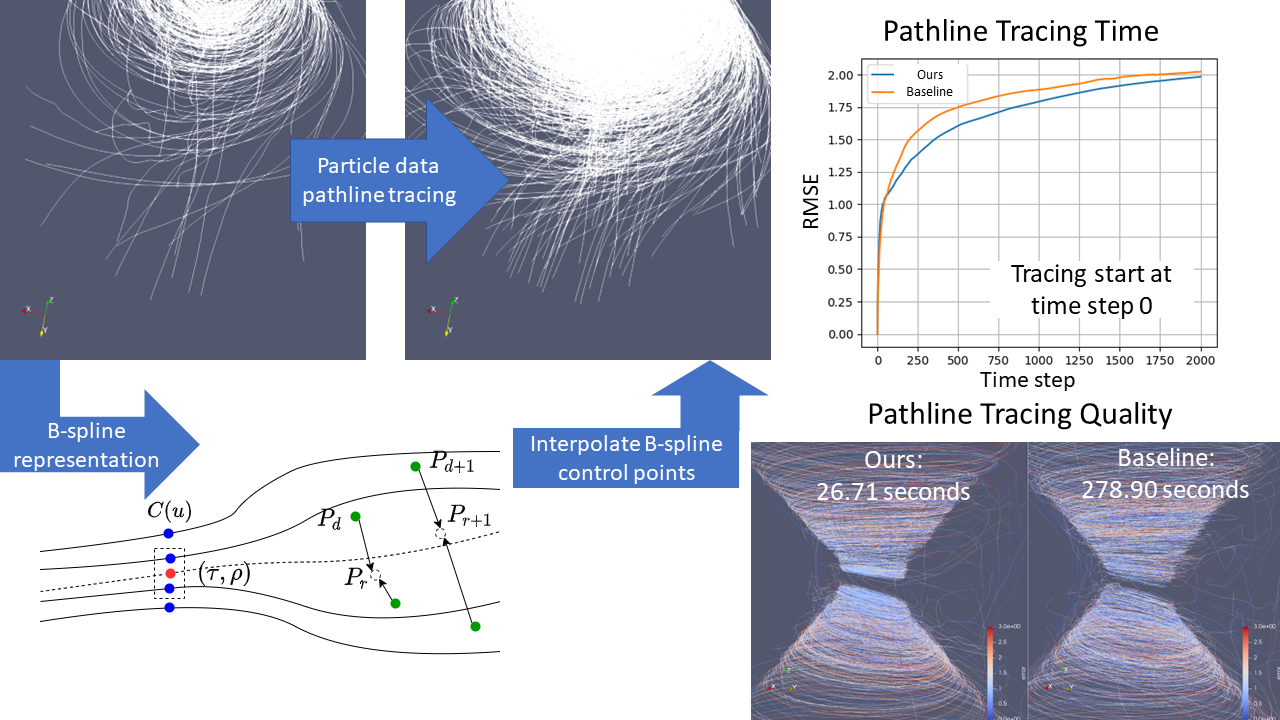Efficient Interpolation-based Pathline Tracing with B-spline Curves in Particle Dataset
Haoyu Li, Tianyu Xiong, Han-Wei Shen
View presentation:2022-10-20T19:27:00ZGMT-0600Change your timezone on the schedule page
2022-10-20T19:27:00Z

Prerecorded Talk
The live footage of the talk, including the Q&A, can be viewed on the session page, Scientific Visualization, Ensembles, and Accessibility.
Fast forward
Keywords
Particle Tracing, Pathlines, flow visualization, B-spline
Abstract
Particle tracing through numerical integration is a well-known approach to generating pathlines for visualization. However, for particle simulations, the computation of pathlines is expensive, since the interpolation method is complicated due to the lack of connectivity information. Previous studies utilize the $k$-d tree to reduce the time for neighborhood search. However, the efficiency is still limited by the number of tracing time steps. Therefore, we propose a novel interpolation-based particle tracing method that first represents particle data as B-spline curves and interpolates B-spline control points to reduce the number of interpolation time steps. We demonstrate our approach achieves good tracing accuracy with much less computation time.